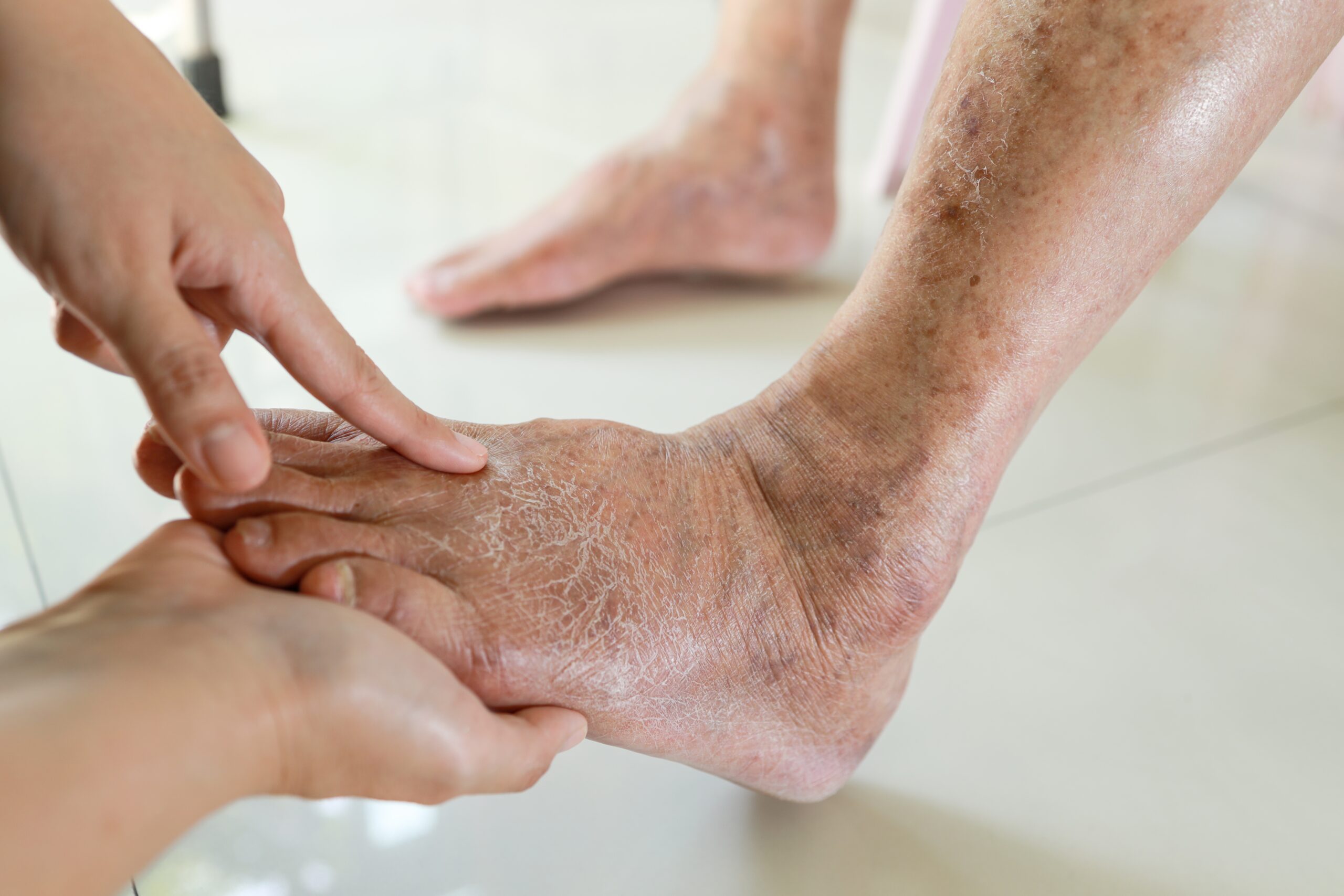Diabetic leg pain treatment aims to reduce pain, improve circulation, and prevent further nerve discomfort. High blood sugar levels cause diabetic neuropathy, which causes direct nerve damage in the legs.
Despite the lack of a cure for diabetes and feet pain, there are treatments that can help relieve the pain, including lifestyle modifications, medications, physical therapy, or surgery in some cases. A pain management specialist or your doctor can help you if you are suffering. You have a better chance of relieving pain and preventing nerve damage if you begin treatment as soon as possible.
NCV/EMG Options and Diabetic Leg Pain Treatment
You can determine whether you have muscular or nerve damage through Electromyogram (EMG) and Nerve Conduction Velocity (NCV) tests, both of which are often conducted simultaneously when you see a specialist for diabetic leg pain treatment.
Neuromuscular abnormalities can be detected using electromyography. An assessment of your muscles and the nerves controlling your muscles is performed during this diagnostic test. For muscles to contract or relax, these nerve cells send electrical signals. EMGs measure the electrical response of muscles to nerve stimulation. If you show signs of muscle or nerve problems, your doctor will order an electromyography test. Besides pinpointing the exact location of an injury, the test also measures the degree of muscle and nerve damage and can point to the extent of diabetic circulation problems.
Detecting nerve injury or dysfunction can also mean a NCV test is required. The procedure, also known as a nerve conduction test, measures the speed at which electrical signals travel through your peripheral nerves. Connecting the brain and spinal cord to the rest of your body is the peripheral nervous system’s job. These nerves assist in exercising your muscles and engaging your senses. Electrical signals are relayed faster and more rapidly by healthy nerves, whereas damaged nerves function less efficiently.
A pain management specialist can diagnose your condition based on the electrical signals within an EMG test, and your diabetes and feet pain can be targeted through a NCV test to determine whether you have damage to your nerve fibers or your myelin sheath, which shields your nerve cells from damage.
Orthopedic Choices and Diabetic Leg Pain Treatment
Lower extremity pain can be reduced or even completely eliminated with the right diabetic leg pain treatment. To treat orthopedic leg pain, you might need to rest, undergo physical therapy, take medications, or have surgery.
It’s possible to reduce pain, improve range of motion, and maintain muscle strength through physical therapy and rest. Inflammation and pain can be treated with non-steroidal anti-inflammatory drugs (NSAIDs) and muscle relaxants as well. It’s always important to begin by finding the root cause of your diabetes and feet pain problem. Physical therapy, though, is very popular since it involves stretching and strength training, as well as hot and cold treatments. Leg strength and flexibility can be improved.
It’s also possible to reduce lower extremity orthopedic leg pain by eating a healthy diet and changing one’s lifestyle. Your legs can also benefit from rest and avoiding activities that tend to strain them. If you aren’t sure what treatment plan will work for you, consult your physician. Surgery is usually a last resort in most diabetes and leg circulation cases.
Trigger Point Injections and Diabetic Leg Pain Treatment
The clinical characteristics of a painful trigger point and unique methodology of trigger point injections usually determine whether that area of your body is active or latent — which is sometimes an overlooked diabetic leg pain treatment option. A trigger point that is active can cause pain even when the body is at rest.
To treat trigger points, pain management professionals use trigger point injections. A variety of conditions can be treated with these injections, including diabetic circulation problems and pain in your neck, back, shoulders, arms, myofascial pain syndrome, and even fibromyalgia.
There is no preparation required for trigger injections. It’s important to discuss your current medications, symptoms, and overall health with your provider before having a procedure. Corticosteroids and local anesthetics are two common types of medications. With injections lasting only a few minutes, local anesthetics numb the area, while corticosteroids reduce inflammation and pain.
A management specialist will likely inject medication into a trigger point manually. There’s a possibility you will experience some pain. It’s common to feel a burning or stinging sensation after the needle is inserted and medicine is injected. A brief increase in pain may occur if the needle tip touches the trigger point. However, directly tackling the problem area is crucial.
You may need an injection if over-the-counter pain medications, heat therapies, massages or physical therapy haven’t relieved your diabetes and feet pain.
Massage Therapy and Diabetic Leg Pain Treatment
There are many conditions that can be treated with massage therapy safely and effectively, which is why many diabetic leg pain treatment patients incorporate massages into their schedules. Lots of pain issues can be treated, including muscle pains, trapped body fluid, spasms, pain patterns, and surgery recovery.
Aside from improving tissue healing, massage therapy can strengthen your immune system, relax you before surgery, reduce stress and anxiety, reduce inflammation, increase blood flow, aid in weight loss, improve digestion, boost your metabolism, relieve constipation, and reduce cortisol (a stress-induced hormone). The benefits of massage therapy are numerous, especially when it comes to diabetes and feet pain.
Furthermore, it’s an alternative medicine that complements a wide range of conditions. The term “modality” refers to a specific type of massage therapy based on a particular set of techniques. Several different modalities are available, each with its own benefits for targeting diabetes and leg circulation.
Acupuncture Therapy and Pain Management
Diabetic leg pain treatment that incorporates acupuncture therapy amounts to injecting needles to stimulate your body’s natural painkillers and neurotransmitters (including endorphins) through a reaction, a rebalancing, or a release.
Acupuncture treatment isn’t a one-size-fits-all answer to your diabetes and feet pain. Some patients feel a dull ache or mild pricking, while others don’t feel anything at all. A feeling of tingling, buzzing, warmth, or weight may be felt as well. After inserting needles, acupuncturists sometimes twirl or move them. There may be times when your sensation increases slightly.
People generally tolerate acupuncture well. If you experience pain, let your acupuncturist know. The needles may be adjusted or a different needle size or technique may be used to make the treatment more comfortable.
After acupuncture therapy, you may feel relaxed or energized. There’s usually a reduction in pain or other symptoms, which is perfect if you’re looking to decrease or even help cure your diabetic circulation problems and symptoms. People find acupuncture to be safe and effective, even though its effects vary from person to person.
IV Hydration and Diabetic Leg Pain Treatment
By boosting your body’s ability to absorb fluids and electrolytes through vitamin rehydration, IV hydration — also known as intravenous hydration — can speed up your recovery process as you go through diabetic leg pain treatment. Minerals and vitamins are used in vitamin rehydration therapy. Magnesium, potassium, sodium, vitamin C, and vitamin B12 are among the most common.
Rehydrating with IV fluids and electrolytes is a safe and effective way to replenish fluids and electrolytes. Fluids and electrolytes are delivered directly into the bloodstream through a needle or catheter inserted into a vein. The process can take a different amount of time for each person. A half-hour to one hour is usually the most time it takes.
Your body benefits from IV hydration in a number of ways, especially if you are simultaneously dealing with diabetes and feet pain. Furthermore, improving electrolyte balance — which is crucial for many bodily functions — helps replenish nutrients depleted by illness, injury, or other circumstances. It can boost your immune system, reduce inflammation, and improve your energy levels.
Wellness and Pain Can Help
A range of options for diabetic leg pain treatment are available at Wellness and Pain. Here, we offer conservative treatments, routine visits, and minimally invasive quick-recovery procedures. We can keep you free of problems by providing lifestyle education and home care advice to help you avoid and manage issues, quickly relieving the inhibiting lifestyle conditions when complications arise.
We personalize patient care plans based on each patient’s condition and unique circumstances to relieve pain, improve mobility and mental space, and improve your overall health.











